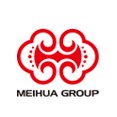Natamycin——nearby white or cream yellow crystal powder.
It is a kind of odorless, tasteless, low dose and highly safe food antiseptics.
Basic information
English name: Natamycin
Molecular formula:C33H47NO13
Molecular weight is 665.73
Quality standard: Natamycin applied hygienic standard (GB 2760-2010); FDA § 172.155,2000
Molecular structure: polyene hydrocarbon macrolide, tetraene system is all-cis;C3~C9 parts of lactonic ring are hemiacetal structure which includes a carbohydrate group linked with glycosidic bond that is amino-2-deoxy-mannose.
Ionization constant: Natamycin belongs to amphiprotic substance, its pKa value is 4.6 and 8.35, its isoelectric point is 6.5, melting point: 280℃.
Solubility: Slightly soluble in water, hardly soluble in most organic solvents. Its water solubility under indoor temperature is 30~100mg/L. When the pH is lower than 3 or higher than 9, the solubility will be increased, while the stability of natamycin will be decreased.
Security
1. ADI (Acceptable Daily Intakes) 0 ~ 0.3mg/kg (FAO/WHO, 1994)
2. Safe to apply on food (FDA, §172.155, 1994)
3. LD50 2.73g/kg (experiment with matured male mouse)
June, 1986, US FDA formally approved that natamycin can be used as food antiseptics. In 1996, China National Standardization Technical Committee for Food Antiseptics formally approved that natamycin can be used as food antiseptics.
FAO/WHO Joint Expert Committee on Food Additives (JECFA) stipulated that human can unconditionally accept 0.3mg natamycin per kg body weight. JECFA/EC also authorized and approved this standard. Human general ADI (acceptable daily intake) is far lower than safety dose, even the cheese and sausage which have large consumption.
Advantage
As a kind of microbial preservation, natamycin receives much concern from people for its safe, natural, healthy characters. Natamycin is with many characteristics: prolongs food guarantee period, prevents deterioration caused by yeast and mould; reduces food recycling caused by deterioration, reduces production cost; satisfies the customers’ demand for natural food; not change the flavor of food; low dose, high efficiency; long antibacterial action time.
Scope of application
It may be applicable to cheese, meat product, broth, moon cake, cake, fruit juice, jam, jelly, marinade product, easy moldy food, surface of processing vessel.
1. Application in cheese
It is applicable to cheese fermenting. It can selectively control mold reproduction and reach normal growth and metabolism of beneficial bacterium. In the junket products, soaking, spraying or emulsion coating with 1.0~5.0g/L natamycin may reach desired antibacterial effect.
2. Application in fermented dairy products
It is applicable to fermentation of dairy products. It can selectively control mold reproduction and reach normal growth and metabolism of beneficial bacterium. In yoghourt, added 5~10mg/kg natamycin can efficiently control the fungus and prolong the shelf life of yoghourt more than 4 weeks.
3. Application in meat product
Steep the meat product in natamycin suspension liquid or spray it on the surface of meat product, especially the dry sausage, this method can effectively control the mold growth of the meat product surface. Spray 4.0g/L natamycin suspension liquid on the surface of meat product or steep the meat product in the suspension liquid, this method can effectively prevent the mold growth.
4.Application in baked food
Moon cake, cake, bread etc, are easy to be moldy. Spraying with natamycin suspension liquid can effectively prevent mildewing, remarkably prolong the shelf life and not influence product taste simultaneously. For the yolk of Cantonese-style moon cake, it may apply 2 minutes of steeping treatment to prevent mildewing. Spraying 300~500ppm natamycin solution on the surface of baked food or spraying the natamycin on the surface of the dough not baked, this method can reach perfect anti-mould effect.
5.Application in drink
If natamycin is added in fruit juice, it can eliminate saccharomycetes and mould in fruit juice, so that it can effectively prevent fermentation and acidification of the fruit juice, not influence the fruit juice taste simultaneously and prolong the storage life of fruit juice. Adding 10—50ppm natamycin in fruit juice can restrain growth of saccharomycetes and mould
and prevent fermentation and acidification of the fruit juice.
6.Application in fruit
Steep fruits in 500mg/kg natamycin suspension liquid for 1-2 min and then package it, this method can prolong
guarantee period more than two months.
7.Application in other eapects
Natamycin also can be applied in preventing mildewing of jam, jelly, marinade product, fish, poultry, margarine and others.
Method of application
Direct adding: it applies to yoghourt, fresh milk and other liquid food or blended foods, such as 10-40g Natamycin is mixed with 1L water and produced into suspension liquid, and then add it into a ton of yoghourt. The mixing time is determined according to the viscosity.
Surface soaking method or spraying method: it is applied in meat product, vegetarian diet, cheese and other solid food, such as ham, sausage, bacon, smoked chicken, soy products or other vegetable food such as steamed bean curd roll, gluten, dried bean curd, etc.
Soaking method: put the accurately processed food into the Natamycin suspension liquid (1-2g natamycin is added
into 1L 8-10%Nacl solution).
The suspension liquid should be stirring to maintain uniform, the temperature shoul Natamycin suspension liquid d be kept in 20-30℃.
Spraying method: spray the mixed (3-4g natamycin is added into 1L 8-10%Nacl solution) uniformly on the food surface
required treatment.
【 package specification】500g/bottle×10bottle/box
【storage condition】under sealed, light-tight conditions with temperature lower than 20℃,expiration period is two
years.















